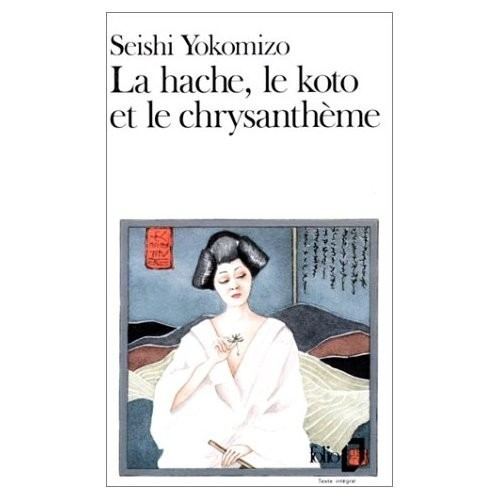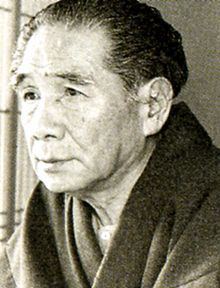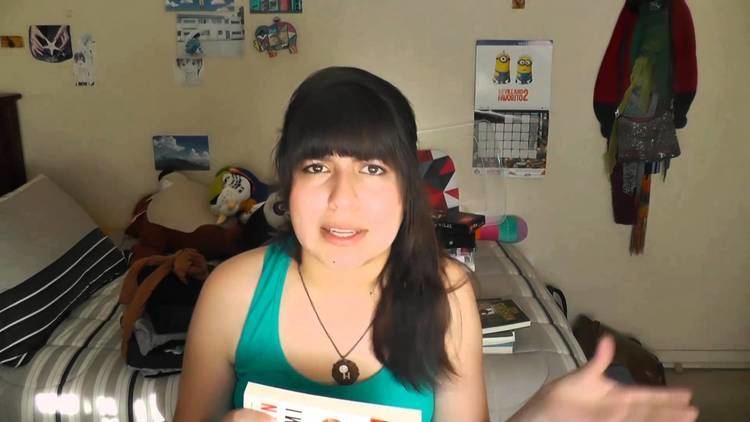Occupation Writer Genre mystery novels | Name Seishi Yokomizo Role Novelist | |
 | ||
Born 24 May 1902Kobe, Hyogo Japan ( 1902-05-24 ) Movies Yurei Otoko, Village of Eight Gravestones, Vampire Moth, Akuma ga kitarite fue o fuku Books The Murder in the Honjin, Akuma no Temariuta, The Inugami Clan Parents Hama Yokomizo, Nobuichiro Yokomizo Similar People Kei Tanaka, Edogawa Ranpo, Koji Ishizaka, Yoshitaka Amano, Kiyoshi Atsumi | ||
TSUNDOKU: 'Gokumon-Tō' de Seishi Yokomizo
Popular Seishi Yokomizo & 古谷一行の金田一耕助シリーズ videos
Seishi Yokomizo (Japanese: 横溝 正史, Hepburn: Yokomizo Seishi, 24 May 1902 – 28 December 1981) was a novelist in Shōwa period Japan.
Contents
- TSUNDOKU Gokumon T de Seishi Yokomizo
- Popular Seishi Yokomizo videos
- Early life
- Literary career
- Legacy
- Major works
- References

Early life

Yokomizo was born in the city of Kobe, Hyōgo Prefecture. He read detective stories as a boy and in 1921, while employed by the Daiichi Bank, published his first story in the popular magazine Shin Seinen ("New Youth"). He graduated from Osaka Pharmaceutical College (currently part of Osaka University) with a degree in pharmacy, and initially intended to take over his family's drug store even though sceptical of the contemporary ahistorical attitude towards drugs. However, drawn by his interest in literature, and the encouragement of Edogawa Rampo, he went to Tokyo instead, where he was hired by the Hakubunkan publishing company in 1926. After serving as editor in chief of several magazines, he resigned in 1932 to devote himself full-time to writing.
Literary career
Yokomizo was attracted to the literary genre of historical fiction, especially that of the historical detective novel. In July 1934, while resting in the mountains of Nagano to recuperate from tuberculosis, he completed his first novel Onibi, which was published in 1935, although parts were immediately censored by the authorities. Undeterred, Yokomizo followed on his early success with a second novel Ningyo Sashichi torimonocho (1938–1939). However, during World War II, he faced difficulties in getting his works published due to the wartime conditions, and was in severe economic difficulties. The lack of Streptomycin and other antibiotics also meant that his tuberculosis could not be properly treated, and he joked with friends that it was a race to see whether he would die of disease or of starvation.
However, soon after the end of World War II, his works received wide recognition and he developed an enormous fan following. He published many works via Kodansha's Weekly Shōnen Magazine in serialized form, concentrating only on popular mystery novels, based on the orthodox western detective story format, starting with Honjin Satsujin Jiken and Chōchō Satsujin Jinken (both in 1946). His works became the model for postwar Japanese mystery writing. He was also often called the "Japanese John Dickson Carr" after the writer whom he admired.
Yokomizo is most well known for creating the private detective character Kosuke Kindaichi. Many of his works have been made into movies.
Yokomizo died of colon cancer in 1981. His grave is at the Seishun-en cemetery in Kawasaki, Kanagawa.
Legacy
The Yokomizo Seishi Prize is a literary award established in 1980 by the Kadokawa Shoten publishing company and the Tokyo Broadcasting System in honor of Yokomizo. It is awarded annually to a previously unpublished novel-length mystery. The winner receives a statuette of Kosuke Kindaichi and a cash award of ¥10,000,000, making it one of the richest literary prizes in the world. In addition, the winning story is published by Kadokawa Shoten and dramatized as a television movie by TBS.
